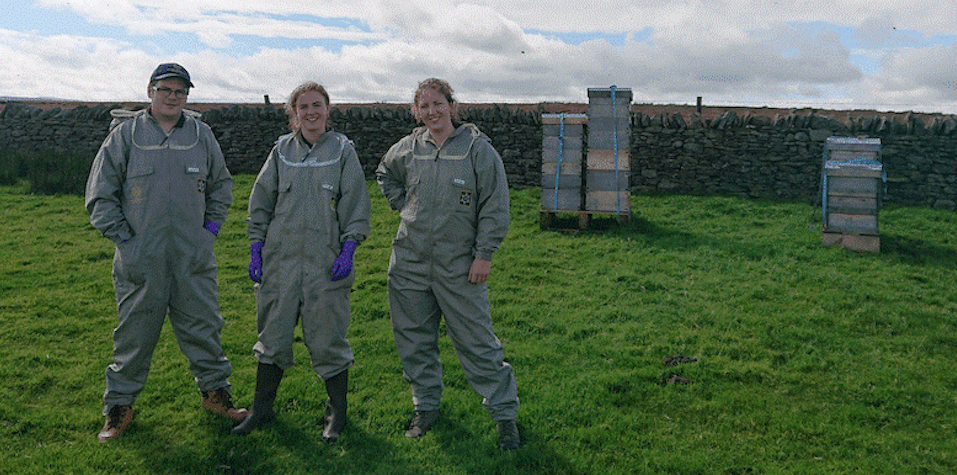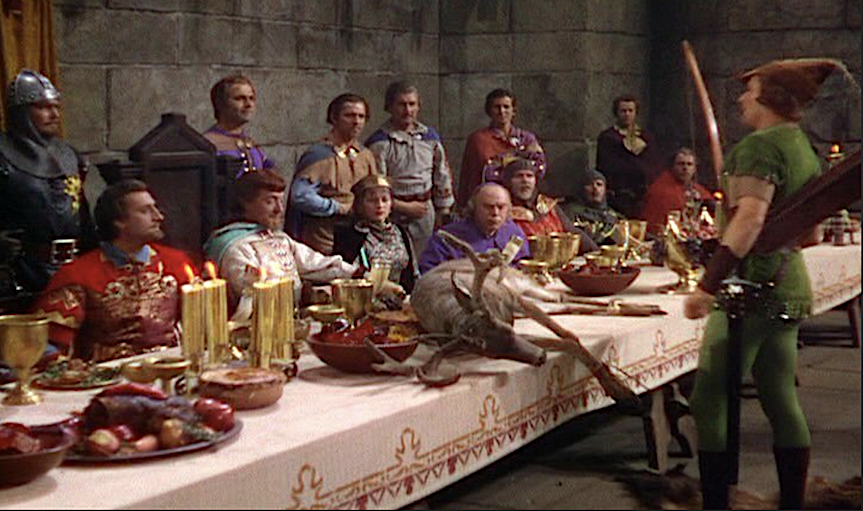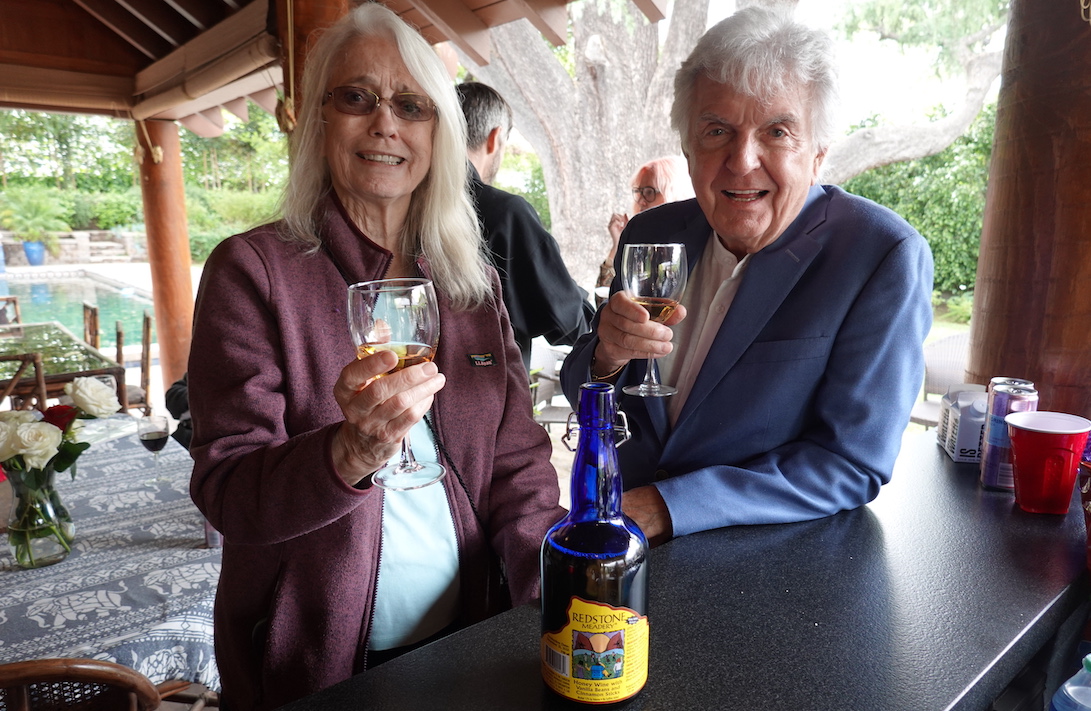
Mead lovers from around the world gather at MeadCon 2022 in Baltimore, Maryland for two days of programs, presentations and networking. The event is sponsored by the American Mead Makers Association. Photo by phoenixfire media
By Cathie Gandel
Beer, wine, or mead? You’re kidding, right? Who wants to drink a cloyingly sweet libation made with honey? Quite a few people, it turns out. “Mead has gone beyond Renaissance Fairs,” says Josh Lampe, executive director of the American Mead Makers Association (AAMA). According to the organization, mead is the fastest-growing alcoholic beverage category in the country. There are roughly 400 meaderies in the United States – up from about 80 in 2010 – with a new one opening every three days.
This robust resurgence may be due in part to blockbuster fantasies like Game of Thrones and Lord of the Rings, but consumers are discovering that mead is not what they expected. It can be incredibly subtle or incredibly complex. It can be sweet, semi-sweet, or dry; still, lightly carbonated or sparkling. Mead makers are taking dazzling creative license with the basic ingredients: honey, water, and yeast. “The base product is such a nice, mild flavor, that it lends itself to creativity,” says Jeri Carter, owner of Queen’s Reward Meadery in Tupelo, Mississippi. “You can go crazy adding fruits, spices and anything else you can think of.”
Carter produces a mead flavored with natural lemon called Pucker Up. Moonlight Meadery in Londonderry, New Hampshire makes an Apple Mead with Madagascar-Bourbon Vanilla and Vietnamese Cinnamon. Fade to Black from The Blacksmith’s Meadery in Schilde, Belgium has an “in your face flavor profile,” says mead maker Gert Smet. It is made with honey, dark, sweet cherries, and black pepper.
Luke and Suzie Hutchinson own the Northumberland Honey Co. Meadery and Bee Farm in Haltwhistle, Northumberland, UK. They have focused on making a sparkling mead by the traditional method, which means the mead goes through a second fermentation in the bottle in which it is sold. This produces the bubbles. “We want our sparkling mead derived from honey to be comparable with the finest champagnes,” Luke says. “We went through many trials to see if you could make the bee equivalent of Champagne.” Their first aged vintage was successfully released in December 2022.

Luke and Suzie Hutchinson with one of their staff ready to tend the hives. The Northumberland Honey Company Meadery and Bee Farm is located in Haltwhistle, UK Photo: Northumberland Honey Co.
Mead through the ages
Mead may be the next “new thing,” but it is not the new kid on the block. A version of it can be traced back 20,000 years, to the African bush. During the dry season, bees sometimes built their hives in the hollows of baobab trees. When the rains came, the hollows would fill up with water. Voila: the first mead. But not the last.
There is evidence of mead in almost every ancient culture. During the Golden Age of Greece, Aristotle was known to have a sip or two of “hydromeli,” a drink of honey and water. He refers to it in his 340 BC treatise, Meteorologica. In 77CE, Pliny the Elder even published a recipe for this “hydromeli,” recommending adding “old” honey to rainwater aged for at least five years. But, he adds, if you really know what you are doing, go ahead and use fresh rainwater, boil it, add honey and “keep the mixture exposed to the days of a hot sun for forty days after the rising of the Dog-star.”
The Greeks called mead the ‘nectar of the gods,” and had no trouble imagining Zeus and his gang of gods and goddesses filling their small drinking bowls more than once with mead. It isn’t a stretch to imagine a Greek hero like Jason loading barrels of mead in his ship, the Argus, in his quest to find the Golden Fleece. The Argonauts needed something to take the edge off after surviving their many challenges.
If the Greeks thought mead was sent by the gods, Nordic people had an entirely different scenario. They believed mead came from a mixture created by two dwarves mixing honey with the blood of a wise man they had just murdered. This drink is called the Mead of Poetry on the premise that anyone who drinks it will become a wise man and a poet.
When the Anglo-Saxon hero Beowulf, comes to save the Danes from the monster Grendel, first meets them in their mead hall. This epic poem, written between 975 and 1025, mentions specifically that the Danes made room for Beowulf and his warriors on the mead bench.

In the tasting room at Queen’s Reward Meadery, customers enjoy glasses of Scarlet Noir, a dry mead made with Pinot Noir grapes, and Delta Gold, a sweet mead made with honey and Riesling grapes. Photo: Annie Price
Mead’s popularity began to wane during the late Middle Ages. Blame Marco Polo. He introduced sugar to Europe. Sugar was cheaper and easier to produce, and honey fell out of favor. Plus, beer and wine were taking over the market.
Honey: The Superstar of Mead
Making mead starts with combining honey, water and yeast and letting it ferment for two to six weeks. This fermented mixture is then transferred to a new tank and aged from two to six months. “The timing depends on how clear, or clarified, the mead becomes,” says AMMA’s Lampe. Spices and fruits can be added during the process. Typical variations are metheglin, mead that contains spices or herbs; melomel, a mead made with fruit; cyser made with apple cider; and pyment made with the addition of grapes.
Honey is the basic ingredient in mead, but not all kinds of honey are the same. Different varieties of honey make very distinct end products. According to Got Mead?, buckwheat honey is the strongest and darkest honey; fireweed honey has a buttery taste, and meadowfoam honey results in a taste “like the inside of a warm marshmallow with hints of vanilla.”
The type of honey also influences the color of the mead. Honey can range from pale yellow to dark amber. After the fruits, herbs and spices have been added, “the product in your glass can be a positive rainbow of potential colors,” says Lampe.
Besides tasting yummy, honey is thought to have antibacterial and medicinal properties, but that doesn’t mean it’s necessarily healthier. It still packs a mean dose of sugar. An article on the nutritional elements of mead reported that just two ounces of mead can have more than 300 calories and 40 grams of carbohydrates. By comparison, two ounces of red table wine has about 48 calories and only 1.48 grams of carbs.
The alcohol content of mead depends on the amount of honey. More honey means a higher alcohol content. Other influences are the additives and the timing of fermentation influence the final product. The alcohol by volume (ABV) of most meads ranges between 3 percent to 20 percent. Beer clocks in at 5 percent ABV; wine at 12 percent ABV.
Mead on the Big and Little Screen
The Beowulf saga was brought to life in a 2007 film. In it, a Golden Horn filled with mead is given to Beowulf to celebrate his victory over the monster Grendel. In Robin Hood, the 2010 film directed by Ridley Scott, Friar Tuck’s hobby is beekeeping, and he uses honey to make mead for his fellow outlaws. The HBO series, Game of Thrones, caught the public imagination so strongly that viewers would get together for Game of Thrones parties. The drink of choice? You guessed it: mead.

Robin Hood (Errol Flynn) interrupts a mead-fueled banquet given by Prince John (Claude Rains), Sir Guy of Gisborne (Basil Rathbone) and Maid Marian (Olivia de Havilland) in the 1938 Adventures of Robin Hood.
Saving the planet
Mead is not just a tasty alternative to beer or wine; it comes with ecological benefits. For one thing, honey does not require cultivation of vast tracts of land farmed with heavy machinery, says Micah Erwin, Owner/Mead Maker at Elgin Meadery in Elgin, Texas. Many meaderies have their own hives, or use locally sourced honey, so ingredients don’t have to be trucked over long distances. Elgin’s seasonal meads are created with fruit from local orchards. Finally, bees have been under stress for the past decade, so the production of honey for mead means more bees and more pollination. “It’s a win-win scenario,” says Erwin.

Customers at Elgin Meadery in Elgin, Texas enjoy a glass of Traditional Mead and Red Nectaris, made with raspberries added to the Texas honey. Photo: Karen Bernstein
Where to get it, how to serve it.
Many of the meaderies do mail-order and liquor stores are beginning to carry mead, but it’s still a boutique market says Michael Fairbrother of Moonlight Meadery. Some stores put mead in the dessert section; some near the hard cider section, and some may have a section devoted to mead. Expect to pay between $72 and $17. If your mead treasure hunt doesn’t prove successful, check the commercial meadery link on GotMead.com to see if there is a local meadery near you. If you absolutely can’t find a bottle of mead in your neighborhood, make your own. One of AMMA’s goals is to be a resource for individuals wanting to learn to make mead.
Along with liquor stores, bars and restaurants are beginning to offer mead. One of the early adapters is Spencer Cox, owner of Guild Hall Gastropub in Burbank, California. The mead on tap changes from month to month and is a favorite drink for patrons playing medieval-themed video games. Quaffing a glass of Viking Blood mead ties into the Middle Ages vibe, Cox says.
Mead can be served slightly chilled or at room temperature. Aficionados say that dry to medium-sweet meads go particularly well with Thai, Indian and Ethiopian cuisines. Fairbrother at Moonlight Meadery makes a semi-sweet mead from Orange Blossom Honey, Strawberries, and Rhubarb. “Pairing this with a Goat Cheese salad is one of the best things in life to try,” he says.

Mead, like this honey wine variety from Redstone Meadery, is often served today at backyard gatherings in Southern California. Photo by David DeVoss
Meaderies around the world
Josh Lampe says that the American Mead Makers Association doesn’t have a definitive list of meaderies yet. They have been working from this Google map document.
The map shows meaderies in North America, South America, Europe, Asia, Africa and Australia and New Zealand. Poland, Slovenia, and Slovakia in Eastern Europe have a number of meaderies.
Metsiederei Eckert is a small Swiss meadery. They produce Wilde Jagd, a spicy mead made of water, honey, yeast, pepper, and tips of pine trees. Brittany is known for a variety of mead called Chouchen, made by adding honey to fermented apple juice. When the Druids introduced the drink, it had a few additional elements: bee bodies and bee venom. Today, sans bee parts, it’s enjoyed as an aperitif.
Countries in Asia are beginning to develop their own meads made with local products. The Lion City Meadery in Singapore introduced a Chrysanthemum Mead, inspired by the chrysanthemum tea brewed by Asian grandmothers. There are start-ups in Japan and Hong Kong. And in Cape Town South Africa, the Cape Town Meadery produces Melaurea, Africa’s first bottle-fermented mead.
If the past is prologue, then the popularity of mead is only going to increase. Look around! Chances are, there is a meadery near you.![]()
Cathie Gandel is a freelance writer based in Studio City, California. She is the author of two nonfiction books as well as articles on health, medicine and lifestyle for Smithsonian Magazine, Newsweek, Reader’s Digest and U.S. News & World Report.

